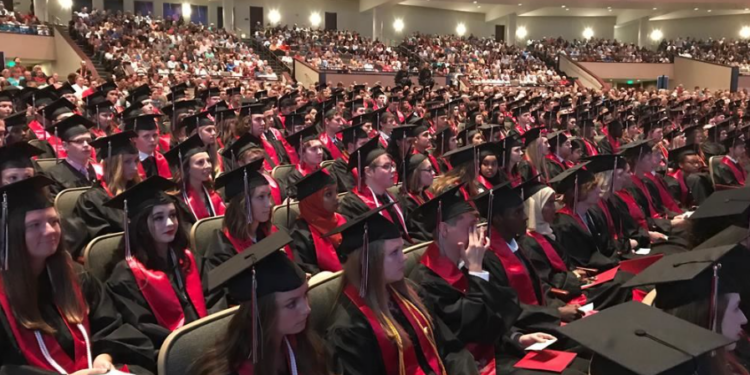Picking a school for one’s child is a huge responsibility. The subjects taught and the manner in which they’re taught – not to mention the learning environment in the classroom – can all make a huge impact upon whether that child is successful as an adult. So how do parents best evaluate a school’s quality?
New research shows that parents overwhelmingly rely on one indicator to measure school quality: graduation rates. As the chart below from EdChoice shows, 61% of parents believe graduation rates tell a lot about school quality.
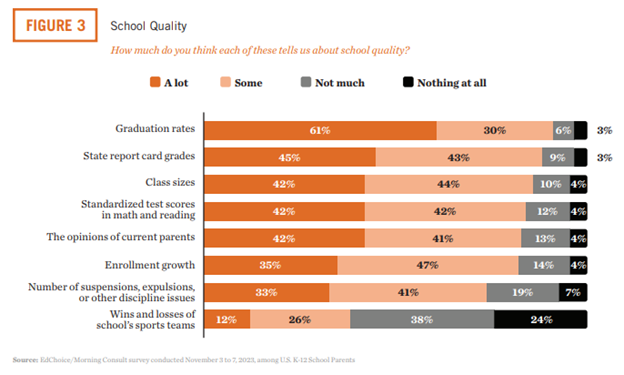
While relying on graduation rates to show a school’s quality may have worked once upon a time, other research indicates that graduation rates no longer give parents an accurate picture of what’s happening in the classroom. In fact, the last five to ten years of data show that high and steady graduation rates may actually be hiding some serious academic decline, leaving students unprepared to face the challenges of college-level work.
“[S]tudents’ college readiness has reached historic lows, according to several metrics,” a recent EdWeek article explains, “including the lowest scores in 30 years on the ACT and declining scores on the SAT, the two primary standardized tests used for college admissions. And yet, more than 4 in 5 high school seniors report feeling ‘very’ or ‘mostly’ academically prepared for college, according to a 2023 ACT nationwide survey.”
College professors see this decline firsthand, EdWeek says, one professor explaining that today’s students can only handle around 10 pages of a reading assignment, and may not always understand it, whereas students a decade or more ago could handle a 30-page reading assignment.
Many chalk up this academic decline to the grade inflation which happened during the COVID pandemic; yet research shows that grade inflation was happening before that, says EdWeek, with an ACT study showing student GPA increases since 2010. This same pattern is reflected in the below chart from The Economist, showing high school graduation accelerating around that same time, while SAT scores went the opposite direction.

Data from the Minnesota Department of Education shows this pattern is happening in our own state. The graduation rate has remained fairly steady statewide for the last five years, around 83%.
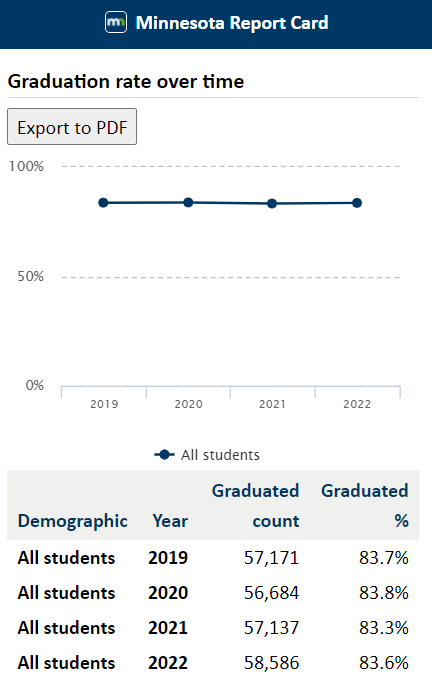
Yet when we look at statewide reading proficiency rates for 10th grade students (the last grade tested before graduation), we see that only half of Minnesota’s students are meeting standards.
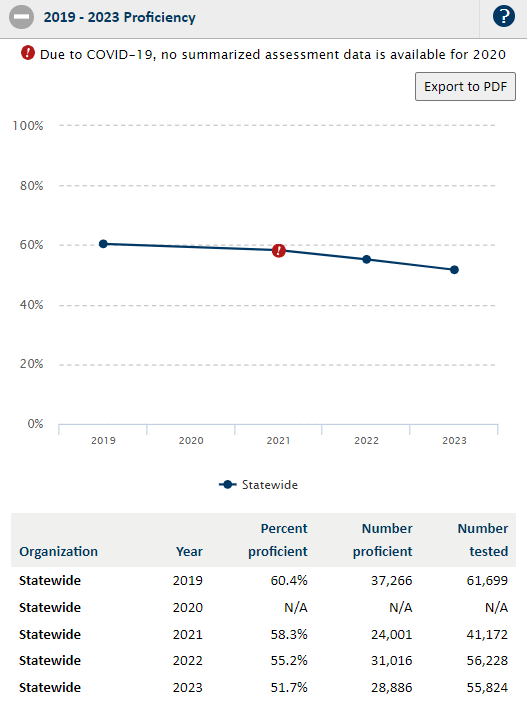
Statewide proficiency rates for 11th grade math are even worse, with only one-third of students meeting standards.
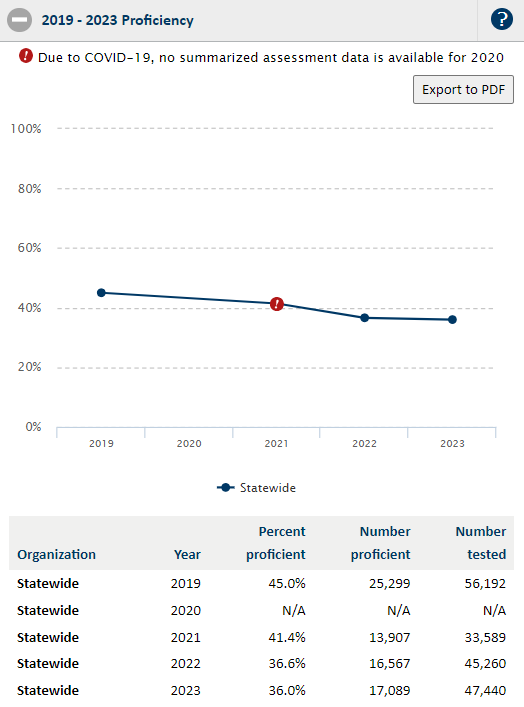
That may be true statewide, many of us would say, but schools in MY district are okay. Graduation rates are high and students are learning!
Sadly, this statewide trend carries through to the district level. Indeed, drilling deeper shows that many local districts tout graduation rates running around 90% or better, while only around half of students in those districts are proficient in reading or math. That means that those straight A’s on your child’s report card may be a false front, a Potemkin Village if you will, signaling that everything is fine with him academically, while in reality, nothing could be further from the truth.
Why do schools do this? EdWeek suggests that school districts support grade inflation because it makes “grading more equitable and boost[s] students’ motivation.”
But there could be other factors at play. Consider that schools are increasingly bogged down by administrative bloat. Policies handed down from above—such as restrictions on discipline in the classroom—make it difficult for teachers to teach. If teachers’ hands are tied, then of course it would be easy to just inflate grades so they can keep pushing students through the school machine and not be blamed for failure to teach a student to read in an out-of-control classroom.
Unfortunately, this administrative bloat only promises to grow worse. As a state legislator recently told me, the Minnesota Legislature is increasingly pushing bills making education mandates for schools. Such bills remove control from local school districts and boards, placing it in the hands of the state at large. The more teachers are forced to focus on these top-down mandates, the less they’ll be able to effectively teach our children.
What do high graduation rates and low academic proficiency mean for our children? It means that we’re sending them to college unprepared. That lack of preparation will make college difficult for them, and may make them drop out, leaving them with mountains of debt and no degree to show for it. In other words, we’re setting them up to fail.
Many advance grade inflation as a kindness—a method to help students feel better about themselves and their achievements. But setting them up for failure isn’t kindness; it’s cruelty.
If we’re fine with setting our students up to fail, then we should continue with the status quo. But if we’re not okay with that, then it’s time for parents to pursue educational freedom, seeking and supporting policies such as Education Savings Accounts (ESAs) which make it possible for parents to take the dollars allocated to their children and use them at schools which won’t just pass students along the grade conveyor belt to boost their self-esteem or fulfill some administrative demand.
And above all, don’t believe every graduation rate you see.
—
Image Credit: Shakopee Public Schools

